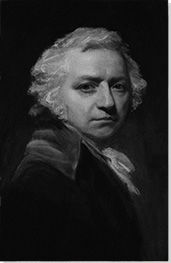Summary of Henry Fuseli
At a time when moralistic reverence and factual accuracy were staples of British academic painting, Fuseli stood out amongst his peers as the artist who revelled in the macabre and fantastical. In the new age of scientific and liberal enlightenment, Fuseli played rather on the spectator's primal fears and instincts in painted scenarios that would often marry the supernatural with the erotic. Coming from a strong theological background, Fuseli's intellectual interests would evolve along more philological and humanitarian lines and he carved out a successful parallel career as a theoretician and professor. He had honed his artistic practice, however, in an eight-year study period in Rome where Michelangelo proved to be his biggest stylistic influence. Thematically his art is most famous for its intense emotional content which was expressed through a series of interpretations of poetic and theatrical works (including Milton and Shakespeare). Though not considered of great (or at least of a lesser) artistic merit, he produced a large number of erotic - most would say pornographic - sketches and drawings that have seen him aligned with the libertine movement that originated in eighteenth century France. He had a conspicuous influence on the style of the emerging generation of British artists, most notably, William Blake.
Accomplishments
- Standing apart from his more austere Academy colleagues, Fuseli was considered the maestro of melodramatic exposition. Having fallen under the spell of the Mannerists while studying in Rome, Fuseli achieved his most powerful dramatic effects through a mastery of chiaroscuro lighting and the skilful foreshortening of figures and objects.
- Though well versed in the ideals of the Enlightenment, Fuseli became closely associated with the German Sturm and Drang (storm and stress) literary group which sought to challenge what they saw as the "cult" of rationalism. His mistrust of rationalism manifested itself in his art through an individualistic style that dealt, not with the objective world, but rather with the experiences of the senses.
- Because of his fascination with dream worlds, sexual symbolism and the supernatural - which he tended to explore through personal interpretations of poetic and tragic literary works - Fuseli is seen as the godfather of the twentieth-century Surrealist movement.
- Fuseli's unabashed love of women played a crucial role in his art. The theme of the sheltered woman being terrorized by a demon saw his paintings singled out as an antecedent of the emerging strain of gothic horror in literature. Meanwhile, his most provocative work emerged out of his sexual relationship with his wife, the artist Sophia Rawlins. Known to be fetishists (predominantly about hair), Rawlins posed for her husband in a series of erotic pictures over the course of their long married life.
The Life of Henry Fuseli
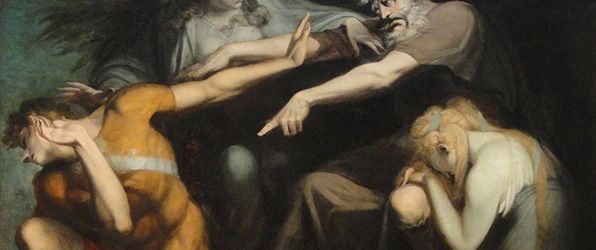
Fuseli was fascinated with the extremes of human passion and was adept at painting scenes of abject human tragedy. In Oedipus Cursing His Son Polynices (1786), he shows the blind Oedipus calling for each of his sons to die at the hands of the other, the dark tones of the canvas echoing the gloomy depths of the human spirit.
Important Art by Henry Fuseli
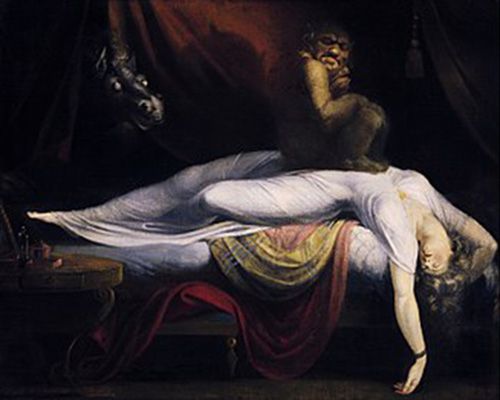
The Nightmare
The Nightmare shows a dark bedroom scene in which a female figure lies prone on a dishevelled bed, seemingly unconscious, with her lifeless arms hanging limply. A goblin sits atop her still body. The goblin represents an incubus, a mythological male creature who sat on female victims delivering them a suffocating feeling associated with sleep paralysis and nightmares. To the left of the frame is a horse's head with its large eyes observing the scene from behind a red curtain.
Arguably Fuseli's most famous painting, and a subject matter to which he would return, it was one of his first paintings to carry charged erotic connotations. Considered innovative in its time, it addressed obscure meanings which are the source of nightmares. In this respect, the painting belongs to the realms of gothic horror that would soon inspire writers such as Mary Shelley and Edgar Allen Poe.
The work has been read on a more personal level, however. On the reverse of the canvas is an unfinished portrait of a girl leading some to believe that the painting may have been an act of vengeance against an unnamed former lover. Others identify the woman in the painting specifically as Anna Landolt, Lavater's niece, and a woman with whom Fuseli had fallen in love. Indeed, the painting depicts an erotic dream Fuseli had had involving her and which he described in a letter to Lavater. In this interpretation the incubus sitting on the woman represents Fuseli himself while the horse's head pushing through the dark red velvet curtains has been read symbolically: as a metaphor for sexual penetration.
Exciting "an uncommon degree of interest", the painting proved very popular with the public when exhibited at the Royal Academy in 1782. Indeed, the engraved versions that followed made The Nightmare widely available and catapulted Fuseli to widespread fame. The painting soon became a source of inspiration for contemporary artists, including William Blake who reinterpreted the composition in his motif for his famous poem Jerusalem, as well as the satirist James Gillray in his Duke William's Ghost (1799), in which he shows George, the Prince of Wales lying drunk on a dishevelled bed.
Oil on canvas - The Detroit Institute of Arts, USA
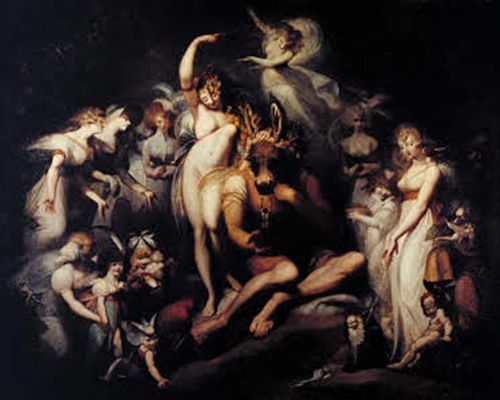
Titania and Bottom
This painting illustrates a scene from Shakespeare's A Midsummer Night's Dream when Oberon casts a spell on Queen Titania causing her to fall in love with Bottom whose own head has been turned into the head of an ass. Fuseli was intent on developing history painting beyond the retelling of events; to produce paintings based on literary and fantastical themes. Shakespeare was the ideal author for his project. Fuseli invented characters from folklore, such as the changeling at the right-hand corner of the painting, the small old man held on a leash by a fairy with a mischievous look, and the butterfly-headed girl on the left. But Fuseli also remained true to the theatrical nature of the work by placing the "players" in a stage setting and by having them look out at their audience.
The picture draws on many artistic influences including Titania's seductive pose from Leonardo da Vinci's Leda (1506), and elves that invoke Botticelli's illustration of Dante's Paradiso (1469). In seeking to portray dream worlds - dreams being the "royal road" to the unconscious according to Sigmund Freud - Fuseli's work is held by many to be a precursor to the work of the Surrealists who were devotees of Freud and his ground-breaking work The Interpretation of Dreams published in 1900. Predating Freud and the Surrealists, however, this painting ranks as an important example of Fuseli's preoccupation with supernatural motifs and he went on to paint several other fantastical scenes based on A Midsummer Night's Dream.
Oil on canvas - Collection of the Tate, United Kingdom
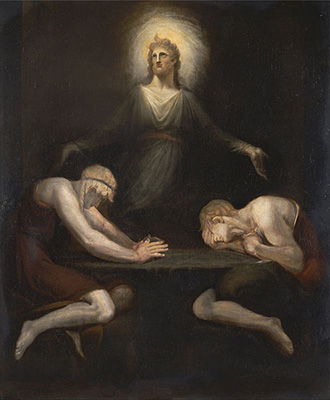
Christ Disappearing at Emmaus
The painting shows Christ rising to the heavens after the disciples recognise him through the breaking of bread, an allusion to the eucharist, the Christian sacrament commemorating the last supper in which wine and bread are consecrated and consumed. This subject matter was popular in the retelling of one of the early resurrection scenes on the road to Emmaus and it followed an artistic theme tackled by the likes of Titian, Pieter Bruegel the Elder, Caravaggio and Diego Velázquez.
The painting is unusual, however, since Fuseli very rarely painted biblical subjects. Although ordained as a priest, he moved away from religious doctrine, declaring himself a non-Christian in the late 1760's. Although ostensibly a religious painting, Fuseli seems to have been drawn to the subject on its own terms as a mythological dream sequence.
Oil on canvas - Yale Center for British Art, Yale University, New Haven, Connecticut
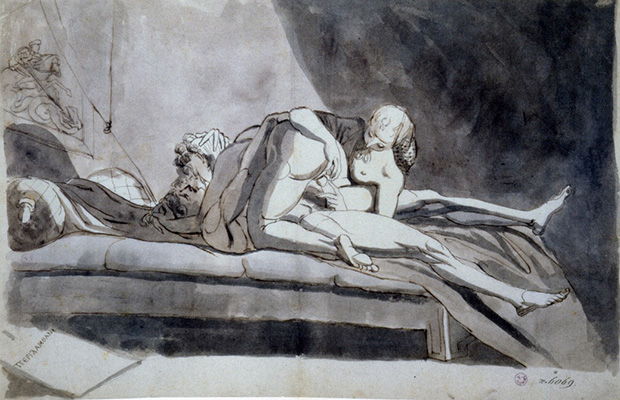
Symplegma eines Mannes und einer Frau mit helfender Dienerin (Symplegma of a man and a woman with a helping servant)
Though it hardly holds its own against his most distinguished works, this pen and ink drawing provides an example of the many erotic drawings Fuseli produced throughout his life. Although many of the drawings were destroyed by his wife immediately following his death - particularly those in which she was depicted - a large number have survived. The drawings were distributed amongst friends and influential patrons and are considered a source of early, pre-photographic, pornography.
This drawing is part of his Symplegma series which he produced during his eight-year stay in Rome. The symplegma (erotic copulation) involved a man and two women, one of which would be a female servant, who, under the manners of the 18th century class system, would oblige the master and mistress of the house by "providing excitement" in fulfilling the couples' conjugal obligations.
Fuseli's were very different to earlier erotic depictions in Western Art which were not as graphic in their illustration of the sexual act. Fuseli was in fact part of a wider libertine movement, which originated in France in the eighteenth century, and saw the widespread availability of erotic etchings. Fuseli's erotic pictures saw him join the ranks of eminent artists including Jean-Frédéric Schall, Jean-Antoine Watteau and Jean-Honoré Fragonard all of whom explored the limits of eroticism in art.
Pen and Ink Drawing - Museo Horne, Florence
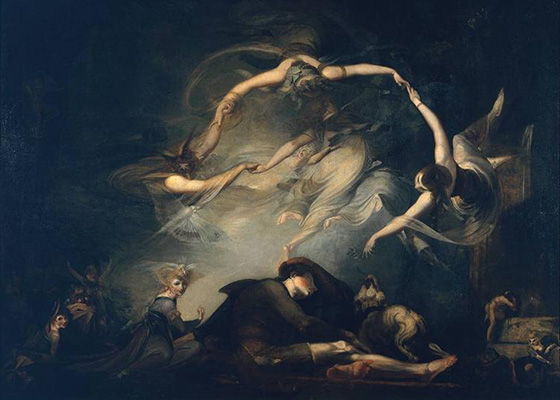
The Shepherd's Dream
Fuseli was introduced to the poetry of John Milton during his student days in Zürich by the Swiss scholar Jacob Bodmer. Milton's epic poem, Paradise Lost held a special appeal for him given that it explores the realms of the imagination, dreams, and the supernatural.
This painting depicts the moment in Milton's poem that compares the fallen angels in the Hall of Pandemonium in Hell to the fairies who bewitch a passing peasant with the sound of their music and dancing. The fairies are shown dancing above the sleeping shepherd with one fairy touching the shepherd with a dream-inducing wand. In the bottom left-hand corner, a witch has just pulled a flowering mandrake out of the ground, and in the right-hand corner, Queen Mabs, queen of the fairies and wife of Oberon who is described as the one who reveals to sleeping men their unutterable desires. While a naked fairy combs her hair, a grotesque child is chained to Queen Mabs pointing to the shepherd. The interpretation given by Fuseli confirms an erotic fantasy which is reminiscent of his erotic drawings.
This work is further evidence of Fuseli's dramatizations of literary texts. He was able to rely solely on his powers of imagination and as such he very self-consciously moved away from the traditional genre of history paintings where viewers judged the painting on its historical or biblical accuracy. This painting was one of a series he made for Fuseli's Milton Gallery which he established in Pall Mall, London, in an attempt to emulate Boydell's Shakespeare Gallery. The Milton Gallery proved a commercial disaster and might have hastened Fuseli's decision to pursue a more academic career path.
Oil on canvas
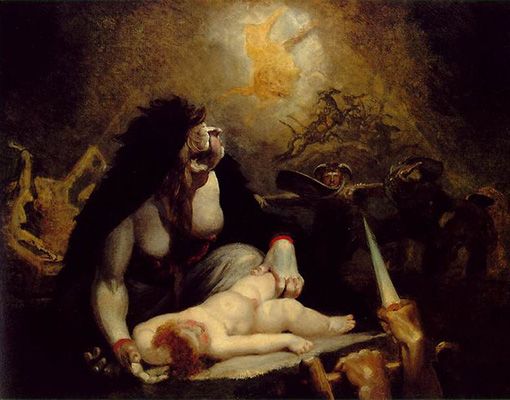
The Night-Hag Visiting Lapland Witches
This painting, first exhibited in 1799 (and sold by the artist to his friend and biographer John Knowles in 1808) illustrates a narrative thread from Milton's Paradise Lost. It shows a witch distracted by the arrival of the Night-Hag, a description used for Hecate, the goddess of darkness and evil, who is "lured by the smell of infant blood". Hellhounds occupy the background while, in front of them, witches dance in celebration of the imminent sacrifice of the child, with the raised hand in the foreground holding a dagger, the instrument of choice for the intended sacrifice.
Fuseli flaunts his mastery of chiaroscuro to intensify the dramatic effect of the scene and thereby updates, or "reimagines", Milton's poem as gothic horror. Art historian, Luisa Cale suggests that the painting is in fact a parody of the Satan and Sin sequence of the poem. Fuseli, she argues, created the horror of depicting "an inverted eucharist in which the community feeds on its offspring" with the almost blasphemous portrayal of the witch in the pose of a classical Madonna. The dancing of the witches, meanwhile, takes us back to Fuseli's painting, The Shepherd's Dream and became a motif in William Blake's (one of Fuseli's most ardent admirers) Oberon, Titania and Puck.
Oil on canvas
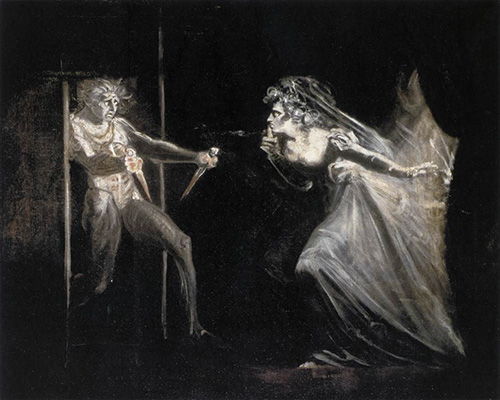
Lady Macbeth Seizing the Daggers
This painting depicts the scene from Shakespeare's play Macbeth in which Macbeth has just murdered Duncan, the King of Scotland. Shocked by what he has just done, Macbeth, still holding the daggers with which he has committed the crime, is berated by Lady Macbeth who is furious at her husband's inability to hide the daggers that might incriminate him/them.
The force with which Lady Macbeth demonstrates as she lunges maximizes the drama of the scene. Fuseli once more displays his mastery of chiaroscuro but here we also see the translucent colouring of the faint blues and whites which bring an added ghostlike otherworldly subtext to the scenario. The fluidity of the brushwork contributes to the movement and creates tension at the expense of fine description: "detail tends to destroy terror" he proclaimed.
Fuseli, who had translated Shakespeare's play into German while still a student in Zürich, first saw the play performed in 1766 with the famous actor David Garrick in the lead role. Following that performance he made his first preparatory sketch but the painting appeared much later and coincided with last performances of the leading actress of the day, Sarah Siddons, who played Lady Macbeth (a character with whom she self-identified) in a performance in 1812. The completion of Lady Macbeth Seizing the Daggers helped seal Fuseli's legend and five years later his international reputation was cemented when he was elected to the First Class in the Academy of Saint Luke in Rome.
Oil on canvas - Collection of the Tate, United Kingdom
Biography of Henry Fuseli
Childhood
Johann Heinrich Füssli (known as Henry Fuseli) was born in Zürich on February 7th, 1741. He was the second of 18 children born to the Swiss portrait painter, Johann Caspar Füssli and his wife, Anna Elisabeth Waser. Caspar was a collector of sixteenth and seventeenth century Swiss art and passed his appreciation of fine art onto his son. Indeed, Fuseli's father introduced him to the ideas of the art historian Johann Joachim Winckelmann and the German painter Anton Raphael Mengs both of whom shared an enthusiasm for classical antiquity and an unwavering commitment to the values of Neoclassical painting.
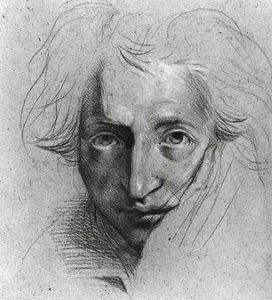
Fuseli spent many hours making sketches of the drawings in his father's collection, a practice he continued well into his teens. His father, somewhat surprisingly given his own profession, disapproved of Fuseli's artistic ambitions. He decreed that his son should train to become a Minister of the Church and arranged for him to obtain a classical education at the Caroline College of Zürich. Once enrolled, Fuseli studied with the influential literary critics J.J. Breitinger and J.J. Bodmer who between them introduced him to the literary works of Milton and Shakespeare. Bodmer was also an early champion of Fuseli's interest in painting. It was while at Caroline College that Fuseli met Johann Kaspar Lavater, the Swiss poet and theologian, with whom he formed a close and lasting friendship.
Early Training and Work
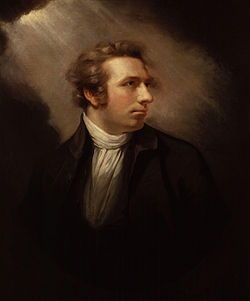
Fuseli was ordained as a priest in 1761. However, he was forced to leave Switzerland soon thereafter for helping Lavater expose a corrupt and vengeful magistrate. He crossed the border into Germany where he fell under the influence of the German Enlightenment, a philosophical movement which dominated European thought during the eighteenth century. The movement promoted the idea of reason to determine legitimate authority and became the precursor of ideas such as freedom and tolerance, and most significantly for Fuseli, the separation of church and state.
In 1764 Fuseli moved to London where he worked as a translator of French, German and Italian books. His first major translation was J. J. Winkelmann's Reflections on the Painting and Sculpture of the Greeks, published in 1765. The German Neo-classicist was hailed by many as the "prophet and founding hero of modern archaeology" and the father of modern art history. Indeed, the volume was considered one of the first to introduce a systematic basis for the classification of art. Soon thereafter Fuseli translated a book on the French philosopher Jean-Jacques Rousseau, Remarks on the Writing and Conduct of J. J. Rousseau, published in 1767. It seems likely that his exposure to such influential Enlightenment philosophers prompted him to publicly declare himself a non-Christian.
While residing in London, Fuseli met Sir Joshua Reynolds, first president of the Royal Academy, to whom he showed his drawings. Reynolds admired the Swiss's draughtsmanship and encouraged him to further his studies in Italy. Arriving in Rome in 1770, Fuseli fell in with a like-minded group of English and Continental artists which included Alexander Runciman, Johan Tobias Sergei, and Nicolai Abildgaard. His studies took in the works of Michelangelo and the Mannerists, as well as Greek and Roman antiquities. His Roman studies would have a major influence on his later work, particularly in his ability to enhance the drama in his pictures by foreshortening figures and by using chiaroscuro and a means of distortion. It was while in Italy that he also changed his name from the German spelling of Füssli to the Italian, Fuseli; an act of deference (to Italy) that helped him assimilate with his newly adopted country. Despite his artistic studies, however, he remained devoted to literature, a passion which continued throughout his life.
Mature Period
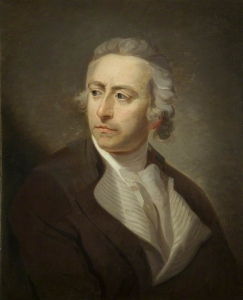
By 1773 Fuseli was already making a name for himself in Rome with a strong connection to the German proto-Romantic Sturm und Drang movement. Sturm und Drang lasted from the late 1760s to the early 1780s and championed the freedom of subjective expression over the rationalism that had helped define the new era of Enlightenment. Goethe, a protagonist of the movement, and admirer and collector of his drawings, saw Fuseli as the visual embodiment of the movement, saying of his art: "What fury the man has in him".
While in Rome, Fuseli fell passionately in love with Anna Landolt, Lavater's niece who he met in 1778. Although unable to marry her due to her father's objection, he was obsessed by her, confiding erotic fantasies of her in a letter to Lavater. Fuseli would live and work in Rome for the next eight years before returning (following a short stay in Zürich) to London in 1779. Back in London he became a regular exhibitor at the Royal Academy.
In 1783 Fuseli exhibited his iconic painting, The Nightmare at the Royal Academy's Summer Exhibition. Engravings of this popular work were sold and provided an important boost to his reputation as an imaginative artist focussing on the psychological depiction of mental states. The publicity he gained from the commercial success of these engraving set Fuseli on a career of painting variations on this theme. Although occupied with new commissions and exhibitions, Fuseli continued his translation work. In 1778, he published an English translation of Lavater's influential book on physiognomy, Physiognomische Fragmente zur Beförderung der Menschenkenntnis und Menschenliebe and assisted the English poet, William Cowper, in his translation of Homer. He also wrote for the radical English periodical, The Analytical Review that included controversial thinkers of the day including Mary Wollstonecraft, best known for her book A Vindication of the Rights of Woman (1792); Thomas Malthus, famous for his population theory; and Joseph Priestly, to whom the discovery of oxygen was attributed.
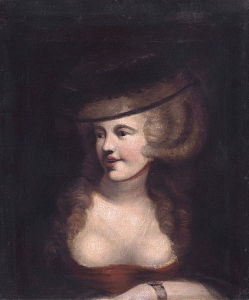
In 1788, the same year he was elected an Associate of the Royal Academy (becoming a full Academician two years later), Fuseli met Sophia Rawlins at an exhibition at the Society of Artists. They were soon married, and Fuseli would regularly use his wife, widely known for her near obsession with hair and fashion, as a model (he is known to have painted over 150 portraits of her). Although they had no children, theirs was known to be a very passionate, even fetishistic, relationship, and she sat for a series of erotic pictures, many of which she destroyed immediately following her husband's death. A notorious lady's man, Fuseli is also reputed to have had a sexual relationship with Mary Wollstonecraft, the early feminist and mother of Frankenstein author Mary Shelley. Keen as he was to continue an open affair with Wollstonecraft, Rawlins stopped short of allowing her visits to their marital home.
Late Period
John Boydell, the eminent engraver and publisher of the period, commissioned a number of important artists, including Sir Joshua Reynolds, to illustrate scenes from Shakespeare with the goal of producing an illustrated companion for his plays. Fuseli, who had fallen in love with the London Theatre, and especially the plays of Shakespeare, contributed a total of nine paintings, including three inspired by A Midsummer Night's Dream. The publication of the folio was however fraught with delays, and the public criticism of the finished work resulted in a commercial disaster. His love of Shakespeare undiminished, Fuseli produced a huge volume of illustrative work which included 85 paintings (five of which were exhibited at the Woodmason's Irish Gallery in Dublin), drawings, sketches and etchings.
In 1799, and inspired by Boydell's Shakespeare gallery, Fuseli opened the Milton Gallery in Pall Mall. Here he exhibited a series of 47 paintings inspired by the works of John Milton which he had painted over the previous nine years. The gallery opening was met with public and critical acclaim with The Morning Chronicle celebrating Fuseli's collected works as "an effort of genius almost equal to the Poet himself". Yet despite its critical success, the gallery flopped as a commercial enterprise and closed within the year.
Also in 1799, Fuseli was appointed Professor of Painting at Britain's oldest dedicated art school, the affiliated Royal Academy Schools, where his teachings went on to inspire many who would become world renowned artists in their own right, such as J.M.W. Turner, Edwin Landseer and William Blake. On being elected Keeper of the Schools in 1804, Fuseli resigned his professorship, before being (re)appointed Professor of Painting in 1810. Henceforward he held both offices until his death (in 1825). Running parallel to his Schools duties, Fuseli made significant offerings to the theory and practice of art, publishing his book, Lectures on Painting in 1801, and contributing to Pilkington's Lives of the Artists published in 1805. (An extensive range of his writings on art were compiled posthumously by his friend, John Knowles in 1831.)
Meanwhile, in 1817, the Italian sculptor, and leading exponent of the Neoclassical style, Antonio Canova, returned to Rome following a visit to London where he was so impressed with Fuseli's work he supported his election as a member of the First Class in the Academy of St. Luke. Founded in 1577, this prestigious association of artists in Rome sought to elevate the stature of painting beyond that of mere craftmanship, and Fuseli's election to St. Luke cemented his reputation as one of the leading artists of the day. Fuseli died on April 16, 1825 in Putney, London, at the age of 84. He is buried in the crypt of St. Paul's Cathedral where eminent public figures are interred including the likes of Sir Joshua Reynolds and the architect Sir Christopher Wren.
The Legacy of Henry Fuseli
A successful artist in his own lifetime, the foundations of his legacy were put in place when his style was parodied by eminent satirists of the day including Thomas Rowlandson and James Gillray. Fuseli directly influenced a number of younger artists including William Blake, Theodor von Holst, the Pre-Raphaelite, Dante Gabriel Rossetti and, through the Royal Academy, eminent artists including J. M. W. Turner, John Constable and Sir Thomas Lawrence. His influence was carried into the twentieth century by the Surrealists who claimed him as a surrogate father. Indeed, the Surrealists paid direct homage to him as an artist who explored "One of the most unexplored regions of art is dreams" in their 1936 New York exhibition, Fantastic Art, Dada, Surrealism. Today his presence is kept alive in the work of contemporary artists such as Juliane Hundertmark.
Influences and Connections

-
![Michelangelo]() Michelangelo
Michelangelo -
![Parmigianino]() Parmigianino
Parmigianino - Rosso Fiorentino
-
![Anton Raphael Mengs]() Anton Raphael Mengs
Anton Raphael Mengs - Joachim Winckelmann
- J.J. Breitinger
- J.J. Bodmer
-
![Mannerism]() Mannerism
Mannerism -
![Neoclassicism]() Neoclassicism
Neoclassicism - Classicism
-
![William Blake]() William Blake
William Blake ![Edgar Allan Poe]() Edgar Allan Poe
Edgar Allan Poe- Theodor von Holst
- H.P. Lovecraft
- John Knowles
- Johann Kaspar Lavater
Useful Resources on Henry Fuseli
- Life and Times of Henry FuseliOur PickBy Peter Tomory
- Henry FuseliBy Martin Myrone
- Henry FuseliBy Gert Schiff
- The Life and Writings of Henry FuseliOur PickBy Henry Fuseli & John Knowles
- Lectures on Painting: Delivered at the Royal Academy, March, 1801By Henry Fuseli
 Ask The Art Story AI
Ask The Art Story AI